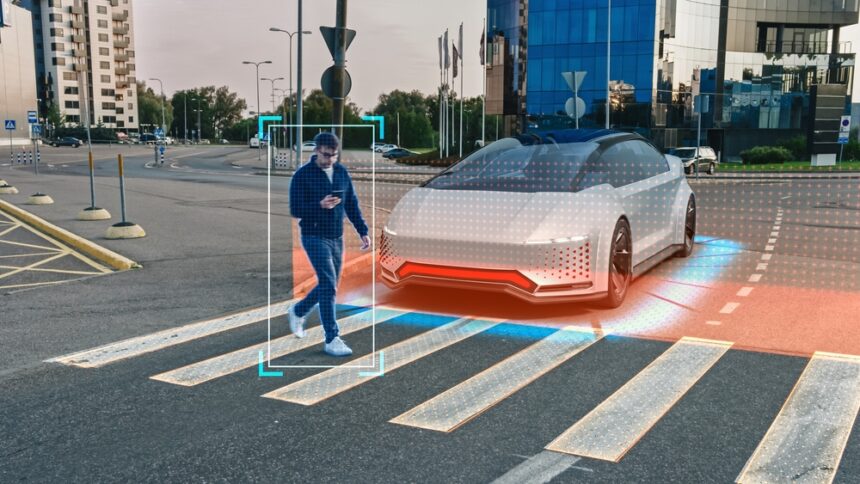Computer vision models are only as powerful as the training data that shapes them. Behind every accurate object detection system, every precise medical imaging diagnostic tool, and every sophisticated autonomous vehicle navigation system lies meticulously annotated image datasets. The quality of these annotations directly determines whether your AI model will excel in real-world scenarios or struggle with edge cases that could compromise performance. As machine learning architectures become increasingly sophisticated, the precision and consistency of image annotation have become critical differentiators between successful AI deployments and costly failures. Navigating the nuances of effective annotation techniques isn’t just beneficial—it’s essential for any organization serious about building robust, reliable computer vision applications.
The Importance of High Quality Image Annotation
High-quality image annotation forms the foundation upon which successful computer vision models are built. The accuracy of annotations directly impacts model performance, with poorly labeled data leading to incorrect predictions, reduced confidence scores, and unreliable outputs in production environments. When annotations contain inconsistencies or errors, models learn these flaws and perpetuate them across new data, creating cascading effects that compromise the entire system’s reliability.
Beyond accuracy, annotation quality affects model generalization capabilities. Well-annotated datasets that capture diverse scenarios, edge cases, and contextual variations enable models to perform robustly across different environments and use cases. This comprehensive coverage proves especially important in safety-critical applications like medical diagnostics or autonomous systems, where annotation errors can lead to serious real-world consequences.
Annotation quality also has a significant economic impact on AI projects. High-quality annotations reduce the need for extensive model retraining, minimize debugging cycles, and accelerate time-to-market for AI products. Poor annotations, on the other hand, often lead to costly data cleaning processes, additional annotation rounds, and extended development timelines that can strain project budgets and push back delivery schedules.
Common Image Annotation Challenges
Annotation Consistency Across Large Datasets
Maintaining consistent annotation standards across thousands or millions of images presents significant logistical challenges. Different annotators may interpret guidelines differently, leading to variations in labeling approaches, boundary definitions, and classification decisions. This inconsistency becomes particularly problematic when multiple teams work on the same project or when annotation tasks span extended timeframes, as standards may drift or evolve without proper oversight.
Handling Complex Visual Scenarios
Real-world images often contain ambiguous objects, partial occlusions, overlapping elements, and challenging lighting conditions that complicate annotation decisions. Annotators must make subjective judgments about object boundaries, determine appropriate labels for ambiguous cases, and decide how to handle partially visible objects. These complex scenarios can lead to inconsistent labeling patterns that confuse machine learning models during training.
Scalability and Resource Management
Large-scale annotation projects demand significant human resources, specialized expertise, and robust quality control processes. Coordinating annotation efforts across distributed teams, managing workload distribution, and maintaining quality standards while scaling operations presents ongoing operational challenges. The time-intensive nature of detailed annotation work can create bottlenecks that slow down AI development cycles.
Domain-Specific Expertise Requirements
Specialized applications such as medical imaging, satellite imagery analysis, or industrial quality control often demand annotators with specific domain knowledge. Finding qualified experts who understand both the technical annotation requirements and the subject matter expertise can be challenging and expensive, potentially limiting the quality and accuracy of specialized annotation projects.
5 Recommended Image Annotation Techniques
Establish Clear Annotation Guidelines and Standards
Developing comprehensive annotation guidelines that specify labeling conventions, boundary definitions, and decision criteria for edge cases creates the foundation for consistent, high-quality annotations. These guidelines should include visual examples, common scenarios, and explicit instructions for handling ambiguous situations. Regular updates to guidelines based on project learnings and annotator feedback help maintain relevance and clarity throughout the annotation process.
Accurately Label Occluded Objects
Teaching AI models to differentiate between fully visible and partially hidden objects is crucial for robust real-world performance. When annotators consistently mark occluded objects with clear boundaries and appropriate labels, models learn to recognize objects even under challenging visibility conditions. Proper occlusion labeling helps models understand spatial relationships and improves their ability to make accurate predictions when objects overlap or appear incomplete.
Enlist the Support of Domain Experts
Specialized applications benefit significantly from annotators who possess relevant domain knowledge and technical understanding of the subject matter. Medical imaging projects, for instance, achieve higher accuracy when radiologists or medical professionals guide the annotation process, while satellite imagery analysis improves with geospatial experts who understand terrain features and land use patterns. This domain expertise helps annotators make informed decisions about edge cases, recognize subtle but important details, and maintain consistency in complex scenarios that might confuse generalist annotators.
Leverage Iterative Feedback and Continuous Improvement
Creating feedback loops between annotation teams and model development groups enables continuous refinement of annotation quality. Regular analysis of model performance on annotated data can reveal systematic annotation issues that may not be apparent during initial quality reviews. This iterative approach allows teams to adjust annotation strategies based on actual model performance rather than theoretical guidelines alone.
Utilize Technology-Assisted Annotation Tools
Modern annotation platforms offer features such as automated pre-labeling, smart interpolation, and AI-assisted boundary detection that can improve both annotation speed and consistency. These tools help reduce human error, accelerate annotation workflows, and maintain consistency across large datasets. However, human oversight remains essential to ensure that automated assistance doesn’t introduce systematic biases or errors.
Elevate Your Image Annotation Project with iMerit
Precision-driven annotation strategies can make the difference between an AI model that performs well in testing and one that excels in production environments. iMerit’s comprehensive image annotation services include bounding boxes, polygon annotations, keypoint annotations, LiDAR processing, semantic segmentation, and image classification. Our collaborative approach centers on working directly with your team to calibrate quality standards and throughput expectations while maintaining optimal cost-effectiveness.
iMerit combines the best predictive and automated annotation technology with world-class image annotation and domain expertise to deliver the data you need to get to production quickly and accurately. Contact our experts today to discover how our tailored annotation services can accelerate your computer vision development!
References:
https://imerit.net/solutions/computer-vision/image-annotation-services/
https://imerit.net/solutions/computer-vision/
https://imerit.net/resources/blog/image-annotation-applications-9-key-use-cases/?preview
https://imerit.net/products/radiology-annotation-suite-medical-imaging-ai/
https://imerit.net/products/ango-workflow-automation-by-imerit/


























